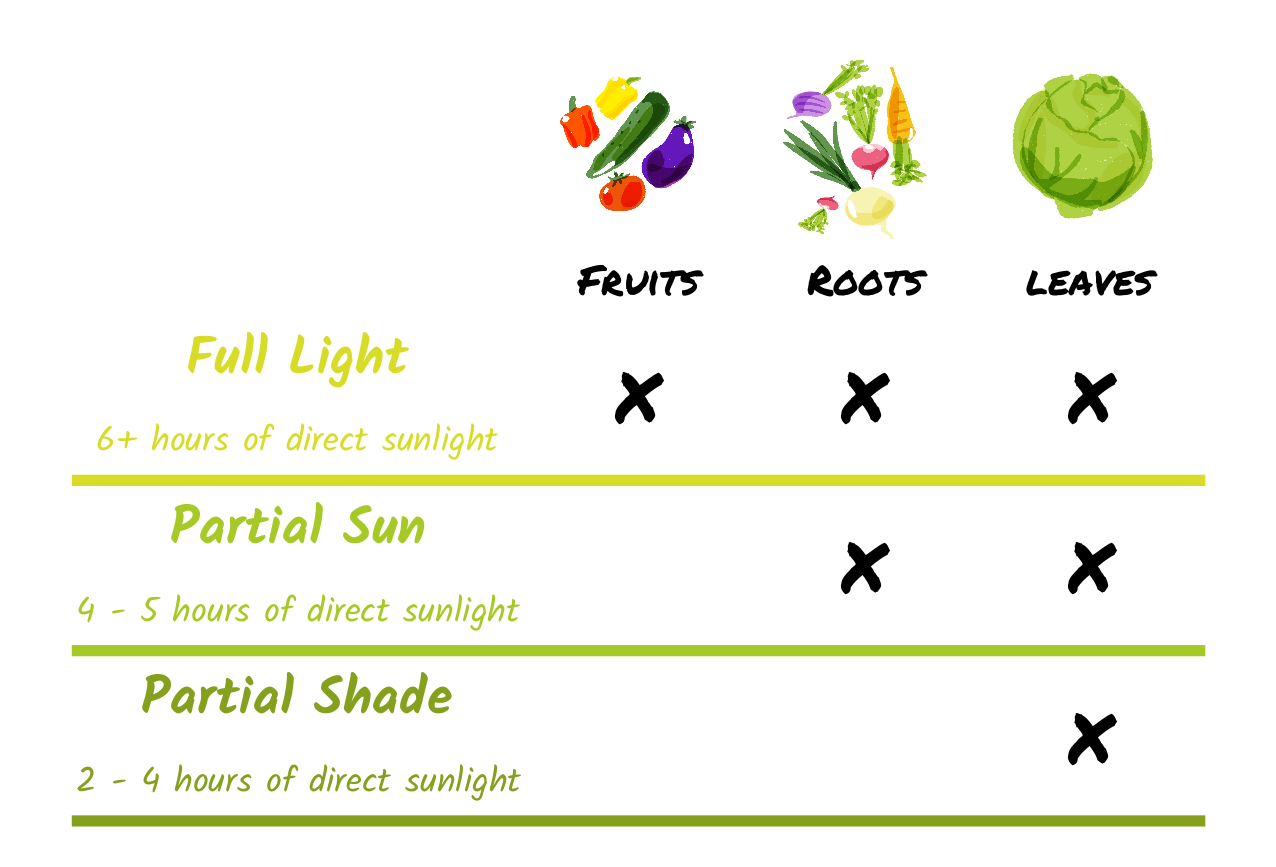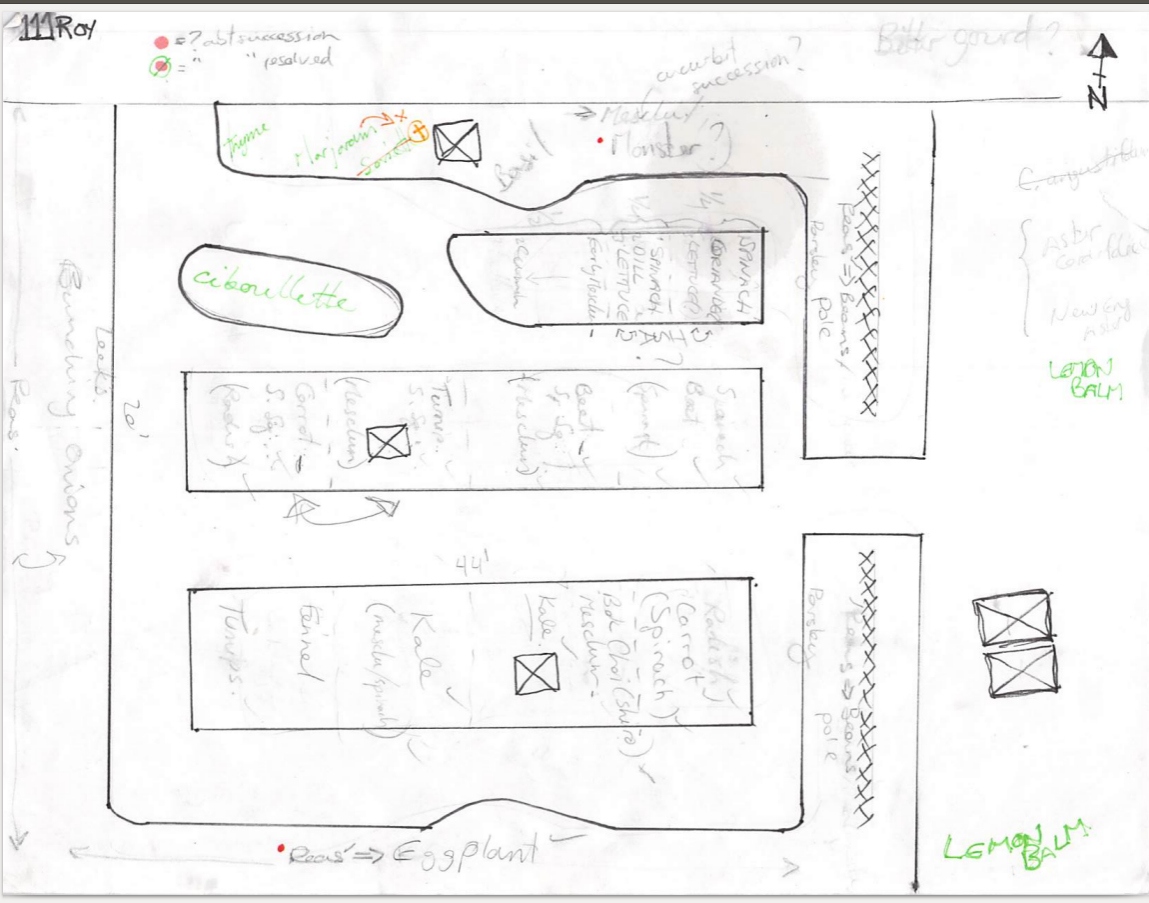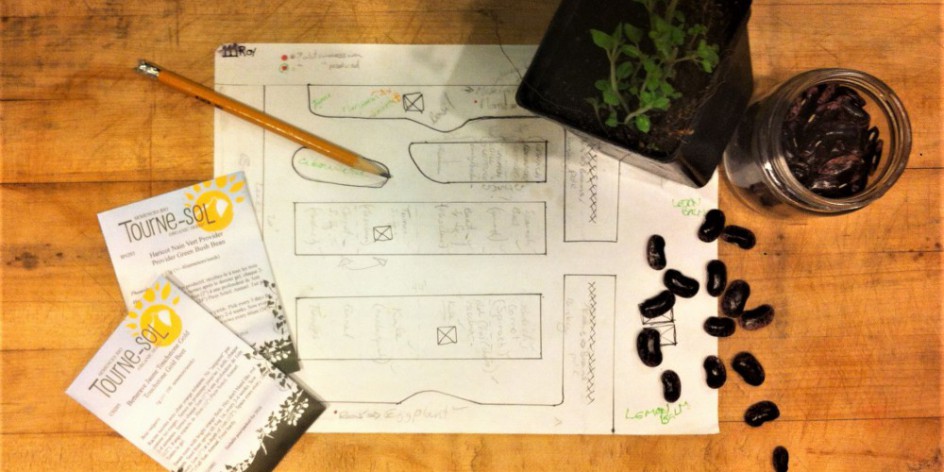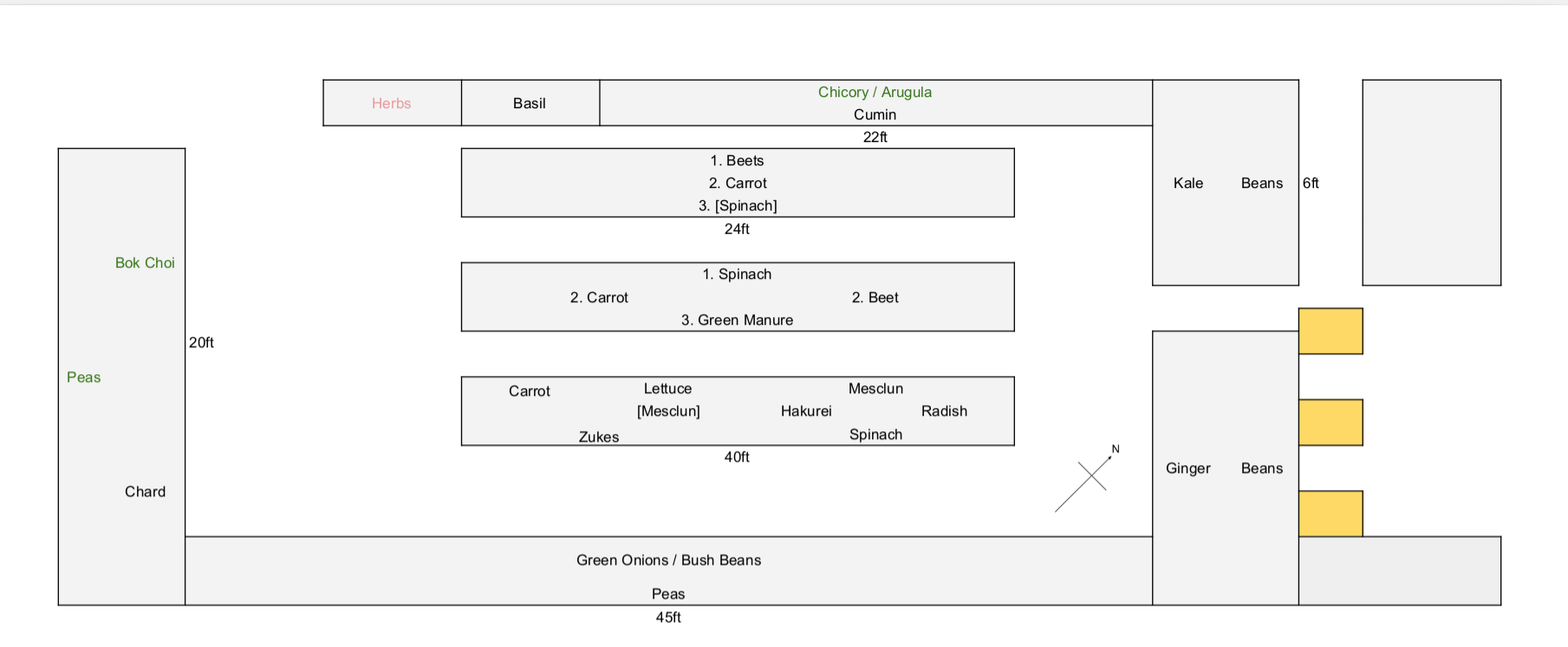Carlo, our Urban Agriculture Manager, gives us a great overview on planning your own garden.
It’s time to start thinking about your garden! I know, it’s still cold and dark but I swear, it’s not too early to start thinking about what you’ll be growing this year. What follows are my tips on how to approach planning a garden based a bit on how we do things at the Roulant and what I’ve learned from working with our volunteers.
Articles like this are one way in which we educate and empower our community members and newsletter aficionados. It is meant as a primer for those that are flexing their green thumb for the first time. It should serve as a practical guide and give you the tools to start designing your very own edible landscape.
Mapping your garden
The first thing to consider is where you’ll grow. What spaces are available to you for growing? If you don’t have access to your own space, or don’t like the space you have, consider asking a friend or neighbour that isn’t able to or interested in gardening themselves: the city if full of underused spaces ripe for the planting!
Once you’ve decided where you’ll grow determine some of the physical attributes of the space:
- How much light does it get? You may not know this if you haven’t spent much time in your garden yet. One way to assess the amount of sunlight is to take note of any structures that lay South (use a compass to not get confused with ”Montreal South”*) of your site. Buildings more than two stories, tall trees, walls, etc. adjacent to the southern limit of your lot will block out much of the sun and mean that your garden is most likely shady. Conversely if your southern edge is clear then you likely have a sunny garden.
- Gardening on a balcony: Many people in Montreal garden on balconies. There are a few things to consider here. The higher you are the more light you’ll get. If your balcony is facing what is considered South (actually South East) or West (actually South West) in Montreal you’ve likely got a sunny spot. North and East facing balconies are shadier.
- How close is the nearest water source? You don’t want to be carrying buckets of water very far to keep your garden irrigated so determine where you’ll be getting your water from. If there is no hose / faucet nearby you may be able to collect water-runoffs from a nearby roof by setting up a rain barrel.
Planning your crops and varieties
Now that you’ve figured out how much space you have and the amount of light it gets, you can start thinking about what to grow. First things first, choose crops that you enjoy eating. For example, I have special place in my heart which is reserved for the hatred of radishes. I would never grow them for my own kitchen because they taste like spicy farts.
Now, just because you enjoy something it may not be possible or reasonable to grow them yourself. Consider the following factors when choosing what you’ll grow:
- Sunlight: Gardeners are often concerned about what to do with gardens that are shady. Essentially the more energy the plant needs to produce the thing we want to eat, the more sunlight you’ll need. The chart below is a broad guideline for what you can grow depending on how much sunlight your garden gets.

- Space: If you have all the room in the world, grow what you want. If space is limited consider crops that yield lots from one plant (such as chard, kale, tomatoes, and peppers) vs. plants that yield less per plant, or per unit area (such as broccoli, cauliflower, zucchini, and melons). Likewise take advantage of vertical space by growing plants that climb or can be trained (such as pole beans, malabar spinach, and cucumbers).
Now you’re ready to choose crops and varieties. It’s always good to go with things that have worked for you in the past. It points to crops that are adapted to your garden’s conditions. That said, don’t be afraid to experiment with a few new crops or varieties each year. For those gardening for the very first time, it’s worth reading the descriptions of the varieties on the seed pack or in the seed catalog and experiment with what you think will work best for your conditions. You can get a great variety of local, organic seeds in our General Store!
Creating a layout
Take some time to make a sketch of where you’re growing, even if it’s only a few bins on your balcony. Indicate the sunny and shady spots and dedicate space to each of the crops you’ve selected. The example below is the rooftop garden at the Roulant. I made copies of the blank drawing so that I don’t have to recreate it every year and eventually migrated to a spreadsheet which I find easier to use.**
Keep your layout every year so that you remember what was where. This way you can ensure that you’re rotating your crops or, if space is limited, amending your soil.

A somewhat messy hand-drawn map of the Roulant Garden. Note that North here points to Montreal North.
Planting Calendar
Now that you have your garden map and a list of crops and varieties it’s time to make a calendar. There are a number of resources online, like this planting calendar from garden.org, that will help you with this task. A planting calculator counts backwards from the last frost date (May 3rd in Montreal) and tells when to start you seeds. They usually include dates for transplanting so even if you don’t plan on starting your own seedlings you should still use this to know when to start planting in your garden. Likewise, it’s important to note that some crops (coriander, beans, radish, carrots, beets, spinach, mesclun, and peas) are sown directly into the soil and not started as transplants.
Sourcing your materials
In order to get started you may need to pick up a few things. The Roulant’s General Store will be selling seeds, chicken manure, seedling soil, and potting soil. For other options you might want to check out the Fêtes des Semences at the Botanical Gardens, Seedy Saturdays in Dorval, or our friends at Urban Seedling for those in the South-West borough.
Happy gardening! And remember to stay tuned for upcoming news about our Agriculture Workshop Series, which will give you the chance to dive deeper into these topics.
* Montrealers use a different convention when referring to the cardinal points. Rather than using magnetic north we refer to the St. Lawrence river for our directions. The flow of the river is considered as going from West to East. In fact it flows Northeast making all of our directions skewed by up to 45 degrees depending on where you are in the city.
** Because it’s a rooftop garden, the sun exposure is the same across the whole site so I didn’t indicate this on my map.


